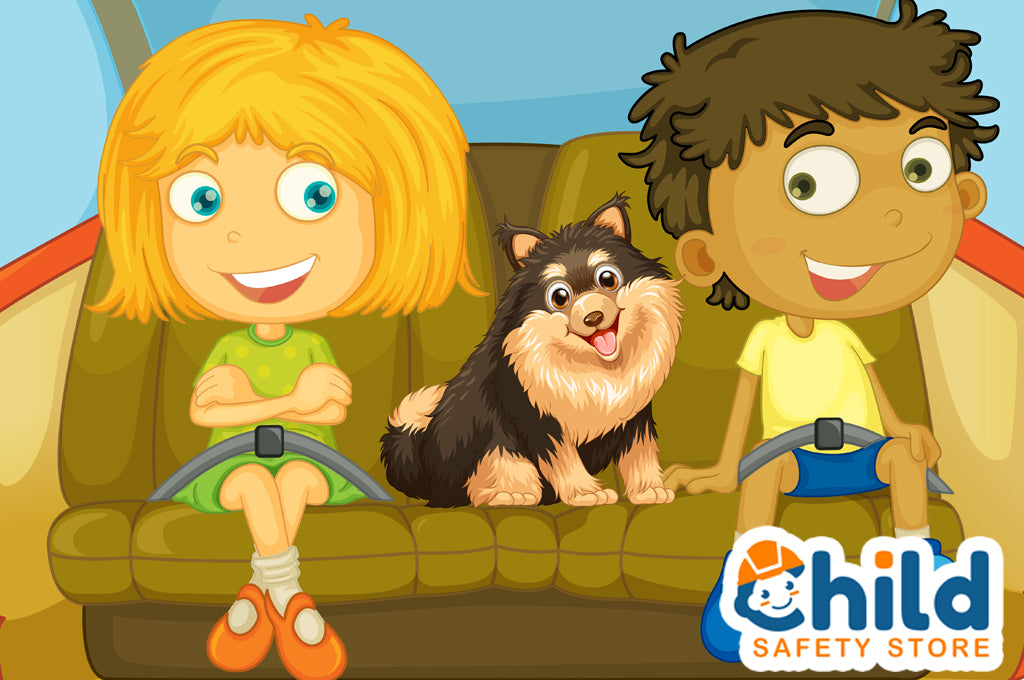
Seat Belts and Older Kids
We’ve discussed child car safety seats in the past, but what are parents to do when a child grows older? While a safety or booster seat is appropriate for young children, it can be difficult to know exactly when your child is ready for the next level and how to keep them safe. With Child Passenger Safety Awareness Week having been last week, we want to address this very important topic.
In today’s blog, let’s explore the proper use of seat belts for older kids and when to leave the safety seat behind.
Seat Belts: A Modern Rite of Passage
Put simply, a seat belt is made for adults and larger bodies. Kids may be anxious to get out of their safety seat, but until they are truly ready, it’s best to keep them securely locked in place. After all, according to AAA, these booster seats can reduce the risk of injury for kids by 71% to 82% when they are installed and used properly . As for seat belts, if a child isn’t big enough to use them it can be dangerous. The safety seat reduces the risk of death by 28% when compared to small children protected only with a seat belt.
All of this is important to remember, even as the little ones clamor to sit like “the big kids.”
When Should a Child Start Using a Seat Belt?
Under usual circumstances, a kid should stay in the car or booster seat until they are anywhere from 8 to 12 years of age. However, more important than age is their height. As we mentioned, size matters when it comes to seat belts.
Let’s be realistic, if you’re heading out for a fun family trip, most parents will not think to grab the measuring tape. As a good gauge of when your child is tall enough, they should be able to sit comfortably with their back pressed to the back of the seat. Next, they should be able to bend their knees over the edge of the seat. In most circumstances, this is possible when your child is roughly 4 feet 9 inches tall. You see, an adult seat belt must fit snuggly and securely.
Properly Wearing a Seat Belt
Now let’s talk about the correct use of seat belts. First and foremost, the lap belt should fit across the little one’s hips and thighs. To properly protect from an impact, it should not lie across the belly. Moving up, let’s talk about the shoulder belt or strap.

Unlike the kids in our cartoon feature image up top, it is critical that the shoulder belt is secure across their body. It should lie across the middle of the rider’s chest and shoulder. If the belt is sliding over the rider’s throat, they are still too little for seat belts.
Finally, many kids like to fidget and squirm in their seats. Before hitting the road, it’s important to lay down some ground rules… and then enforce them. If the seat belts are on, everyone should remain seated. Above all, parents should make sure that the shoulder straps stay in their proper position. Too often, kids like to tuck the “uncomfortable” shoulder belt under their arms or rest it behind their back. This may be more comfortable, but it severely diminishes the usefulness of seat belts. It leaves the torso, neck and head completely unprotected and adds extra slack to the seat belt. If an accident occurs, your child could be severely injured.
Moving to the Front Seat
Now that you understand when a child is ready to start using seat belts… how long until they can ride up front? Well, tell them to keep waiting. For maximum safety, all children younger than 13 years old should ride in the back seat. It’s just safer, and it better protects their little bodies from a potential injury. That’s probably not what an adventurous little one wants to hear, but when the wellbeing of a child is at stake, sometimes it’s necessary to give them the bad news. In the end, they’ll thank us for it!
